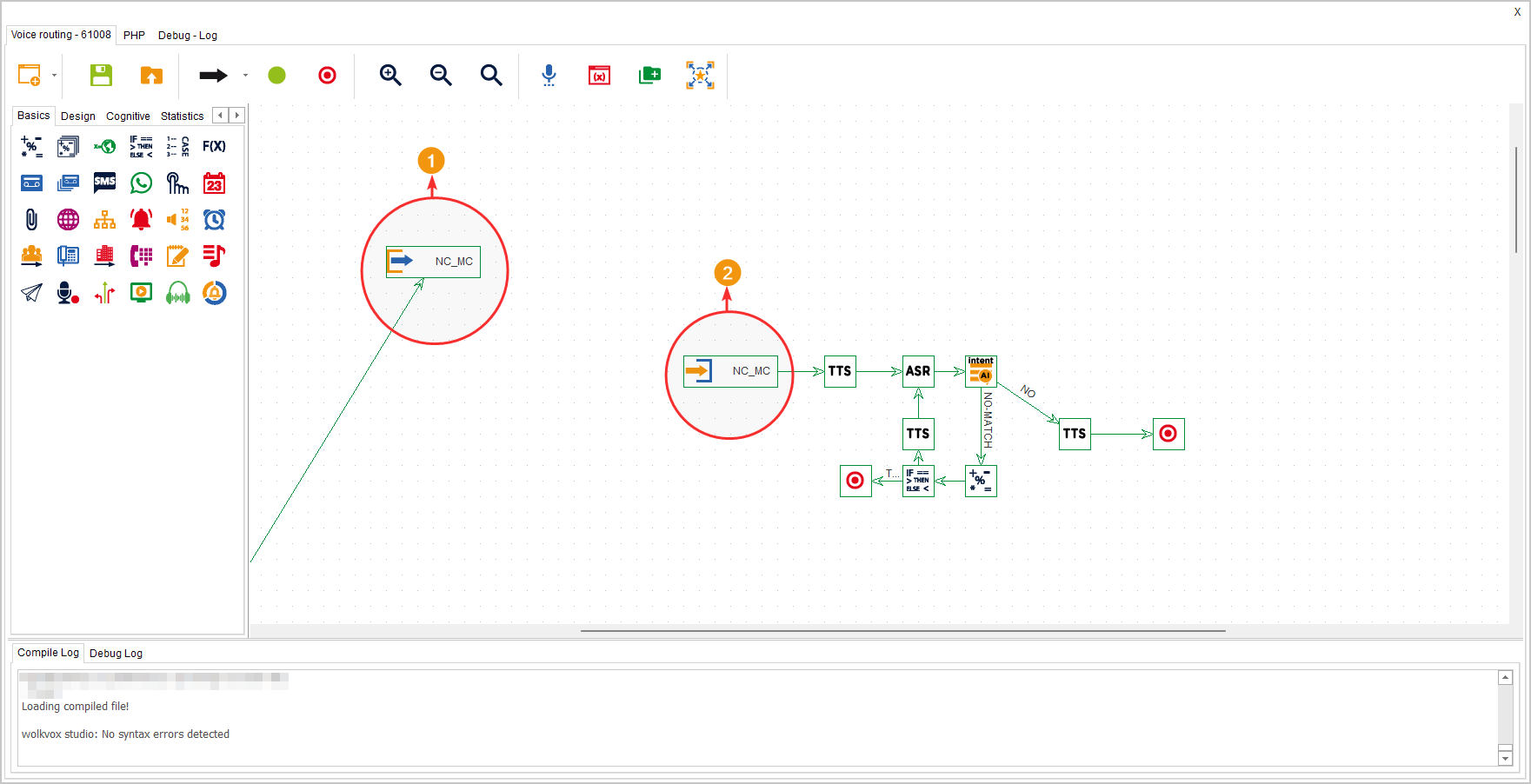These two components function as entry and exit gates, which allow both organizing the workspace and separating the flow as needed.
They are located within the group of components called “Design” and are available in all types of routing points (Voice, Interaction, Chat, and CRM + Webkook).
The “Connector in” component is the entry gate, that is, the one that allows entering another section of the flow.
The “Connector out” component is the exit gate, that is, the one that allows leaving the flow and then entering another separate section of the flow through the “Connector in” component.
Configuration #
The “Connector out” component is the one that allows exiting the flow to go to another separate flow.
The “Connector in” component is placed at the beginning of the flow that you want to reach from a “Connector out” component. When entering the configuration of the component, you must assign it a name.
In the following image, you can see an example of using the “connector out” component to indicate that you want to continue the route elsewhere and the use of the “connector in” component to indicate that the previously paused route starts from there.







